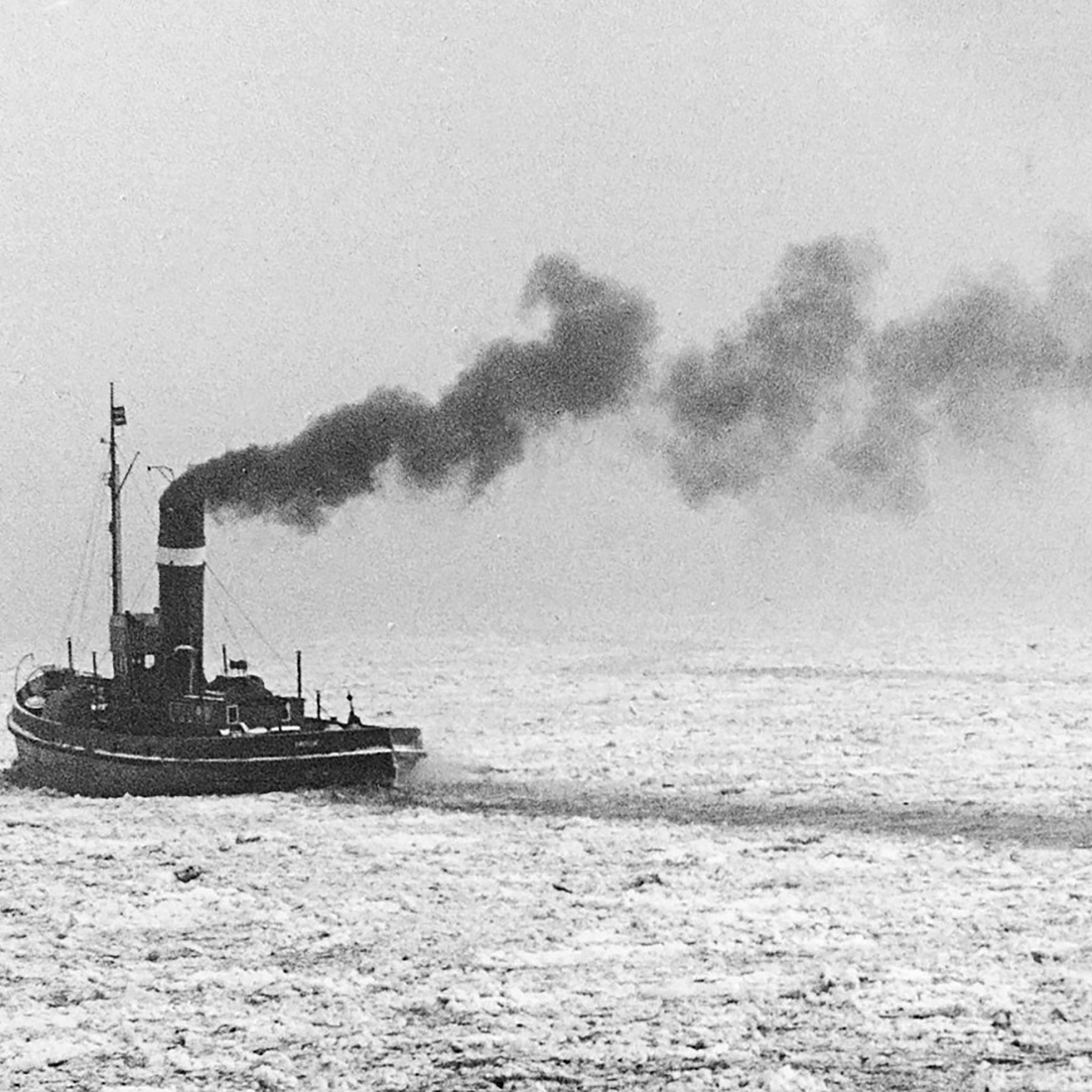The engine journal of the Bremen icebreaker DONAR
In the series "Archive of the Month", the German Maritime Museum (DSM) / Leibniz Institute of Maritime History presents a special treasure from the archive every month. The month of April brings with it some capricious weather, even snow is still conceivable. Fittingly, DSM archivist Dr. Christian Ostersehlte presents the engine journal of the Bremen icebreaker DONAR from 1892.
On smaller ships, the deck, bridge and engine also form mentally separate areas. What the logbook is for the nautical ship's officer, the engine journal is for the engineer.
The present copy dates from the period 1892-1922 and reports on a chapter that has since passed. Until the early 20th century, ice winters were the rule, not the exception, on the Lower Weser. In 1887-1895, during the Lower Weser correction, the river was dredged to a water depth of five meters as far as Bremen, so that seagoing ships could once again travel upstream. To ensure that this was also possible in winter, the Bremen State Hydraulic Engineering Inspectorate put two icebreakers, SIEGFRIED and WODAN (300 PSI), into service in 1889/90. However, it became apparent that the two steamers were not sufficient. So in 1892, the Bremer Schiffsbaugesellschaft in Vegesack delivered the icebreaker DONAR (950 PSI), which could compete with the most powerful German icebreakers in Hamburg, Stettin and Königsberg and was not scrapped until 1964 in Bremerhaven.
Contact
Thomas Joppig
Overview archives of the month
Archive of the Month: Treasure from the Archive
Archive of the Month in January: From New York to Bremen 1859
Archive of the month for February: Photos of the small cruiser MEDUSA
Archive of the month in April: The engine journal of the Bremen icebreaker DONAR
Archive of the Month in May: The Diary of Caroline von Aschen
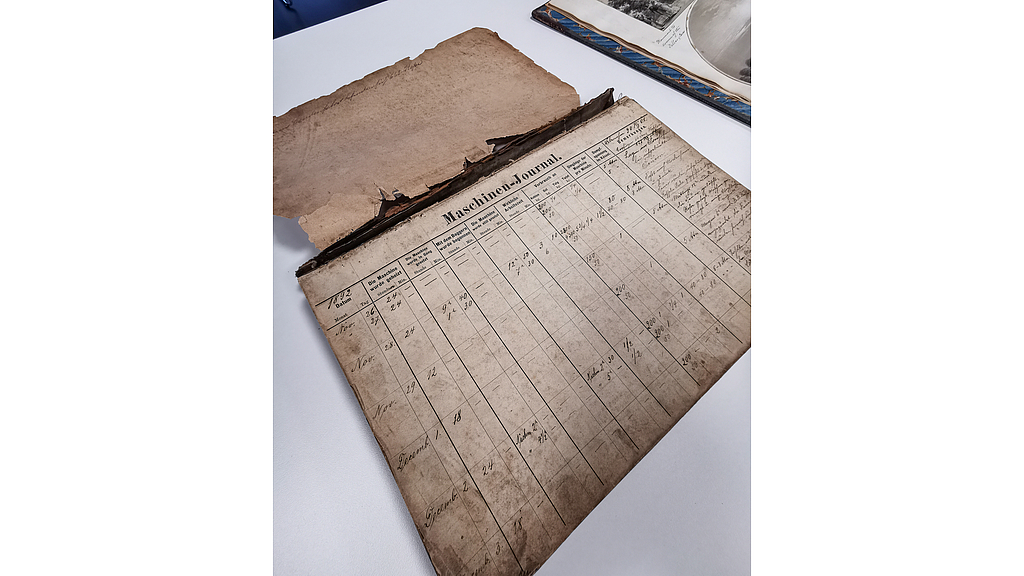
Das Maschinen-Journal der DONAR. Credit: DSM / Annica Müllenberg
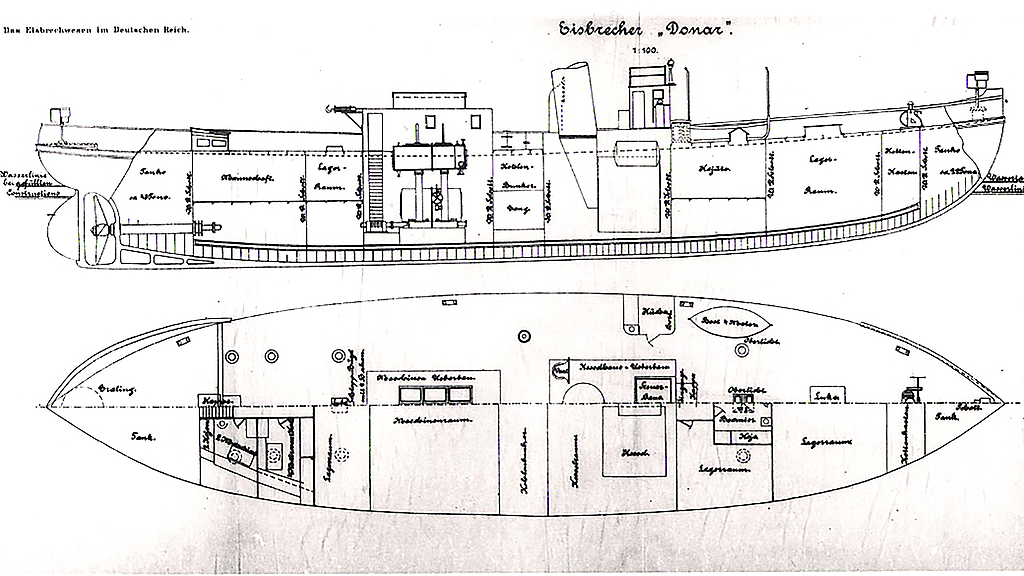
General plan DONAR (from: Görz/Buchheister, Das Eisbrechwesen im Deutschen Reich, 1900). Credit: DSM
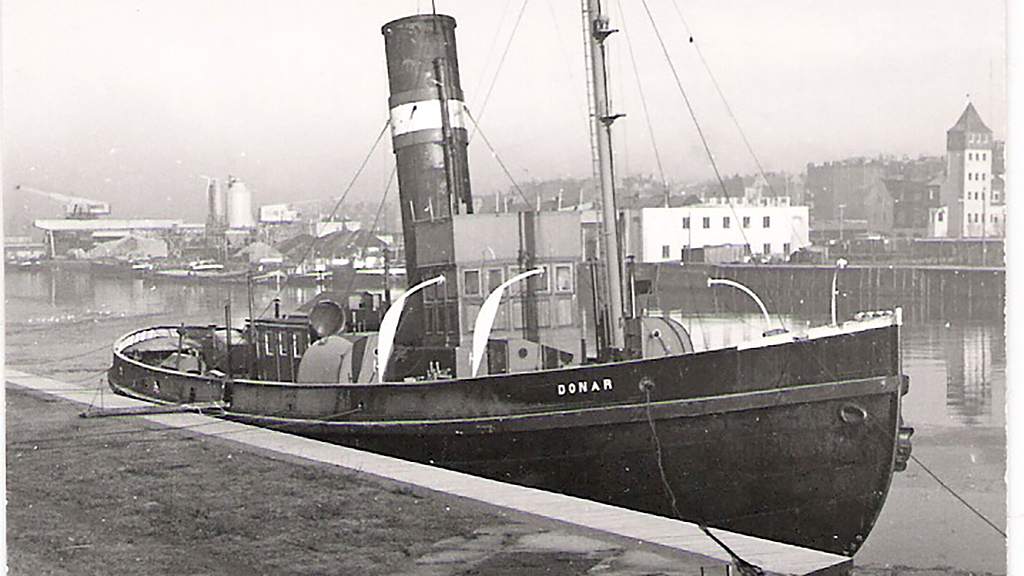
DONAR in the New Harbor in Bremerhaven (photo.Karl-Heinz Schwadtke, collection Christian Ostersehlte). Credit: DSM
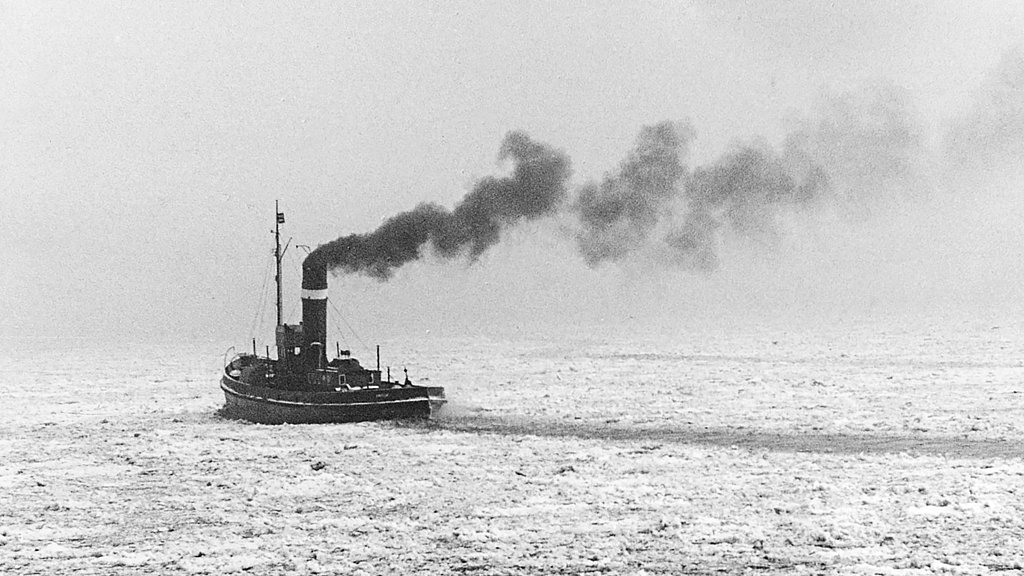
DONAR in the ice. Credit: Archiv DSM

